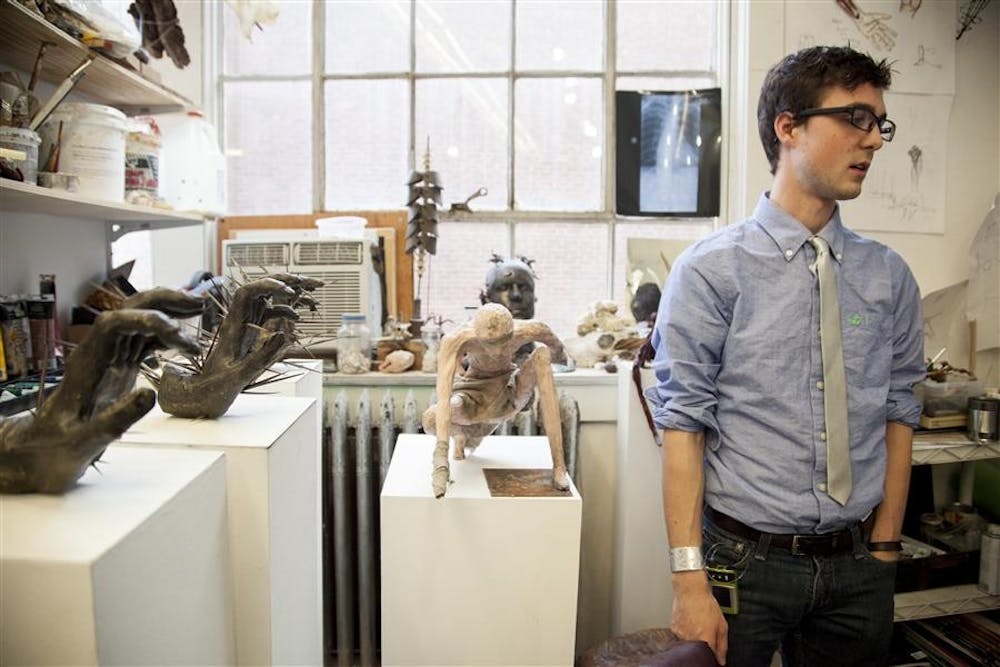Thirty minutes and five people later, his mother’s insulin pump was in his body despite his protest.
The insulin pump read 469 – more than 300 points above average.
His mother took one look and told him he was diabetic.
She also had Type I diabetes, so he had a sense of what it was to be diabetic, but for both mother and son to get diabetes externally after birth was rare.
Dillon was traumatized. He was 16 and feeling invincible, but then he was faced by his own mortality in a violent way. In the general pediatric doctor’s office that day, all he could do was stare at posters of different colored, cartoon-like cats around the room to prevent him from breaking down and crying. The cats were posed in different ways — one was blowing out a birthday cake.
But for Dillon, it was the thing he focused in on when the doctors were telling him all the potential things that could result from diabetes. Being exposed to this news was traumatic for Dillon.
“It didn’t sink in until we went into the doctor,” he says. “They told me ‘This is what is going to happen and how you have to live your life because of this.’”
Six months earlier, he went to the doctor for lack of appetite, sensitivity to light, and pain. The doctors ran tests that showed all the symptoms of being diabetic, but he was diagnosed with mononucleosis, a virus that is transmitted through saliva.
But at school, Dillon would stick his head under the faucet, drinking water. He would step away and still be thirsty.
His blood sugar had skyrocketed.
The mononucleosis had settled in his pancreas, resulting in Type I diabetes.
He was depressed for a while, going through the stages of grief — anger, denial, bargaining. But the summer during the end of his sophomore year of college, he began to get over this grief. Living with his sister and her roommate, who is now his girlfriend, provided an environment of people who really cared for him and helped him progress.
***
Now 22, Dillon has begun accepting that diabetes defines part of who he is. It is something he has to deal with every day. There are still days that make him upset and angry, but he is more stable.
“Stability is when you are good most of the time but not expecting to be good all of the time,” he says.
But Dillon doesn’t let diabetes power every aspect of his life. He is constantly keeping track of everything that goes into his body, but he also pays attention to his temperature and his emotions, as these factor into his blood sugar level.
“[You can] only do so much to control it,” he says.
In Dillon’s sculpting studio in the McCalla School on Ninth Street, there is always candy — now, there is a jumbo bag of Smarties, but Nerds and Sour Patch Kids were before that. And there is always Coke.
While his diet hasn’t changed that much, he knows how many carbohydrates certain foods have.
A double-stuffed Oreo has eight carbs. A Coke has 45 carbs. And a Big Mac has fewer carbs than a Subway sandwich.
As a diabetic, he has had to learn how many carbs there are in everything he eats. It has become second nature.
For every 10 carbs he eats, he injects one unit of insulin. Dillon doesn’t give himself the same amount of insulin as his mom. Different foods affect different people in different ways.
Sometimes Dillon has emotional swings, gets shaky, and feels ill when his blood sugar is too high. It is a constant state of feeling bad.
But rather than letting it control his life, Dillon accepts it.
Now, he wants to help other people do the same. After graduation this month with a bachelor of fine arts in sculpture, he plans to get into the diabetes field either as a pump representative or pharmaceuticals salesman.
“I wasn’t in a place where I could have done it until recently,” he says. “It is really fulfilling for me to help those people, and it is sort of for a reason.”
In the meantime, he is reaching out to other people through his art. Dillon has been making art for as long as he can remember. For him, art was the only avenue to express what he was going through.
In high school, his medium was photography, but now the senior uses his sculptures as a narrative of his journey living with diabetes.
“It was the real passion for me to pursue it,” Dillon says. “It really gave it a jumpstart.”
On Dec. 13, Dillon will be showcasing this art in his senior thesis show — Purpose of Pain. Focusing on diabetes in conjunction with the idea of pain, the show explores being ill and what it means — trying to find a purpose or reasoning in that condition.
“It is a running narrative of my experience,” he says. “It is helping other people with chronic illnesses go through it and relate to it and be able to see ways through it.”






